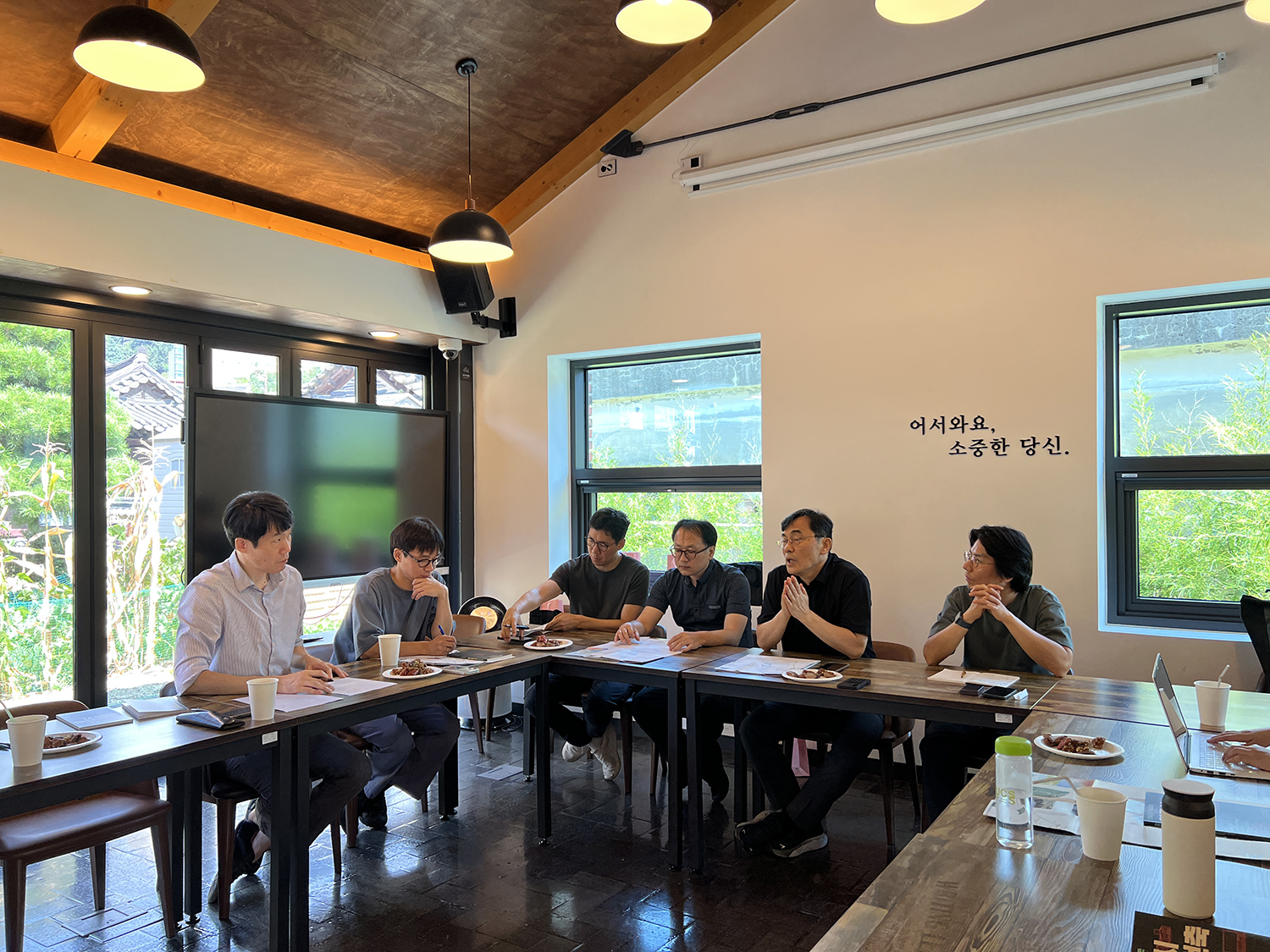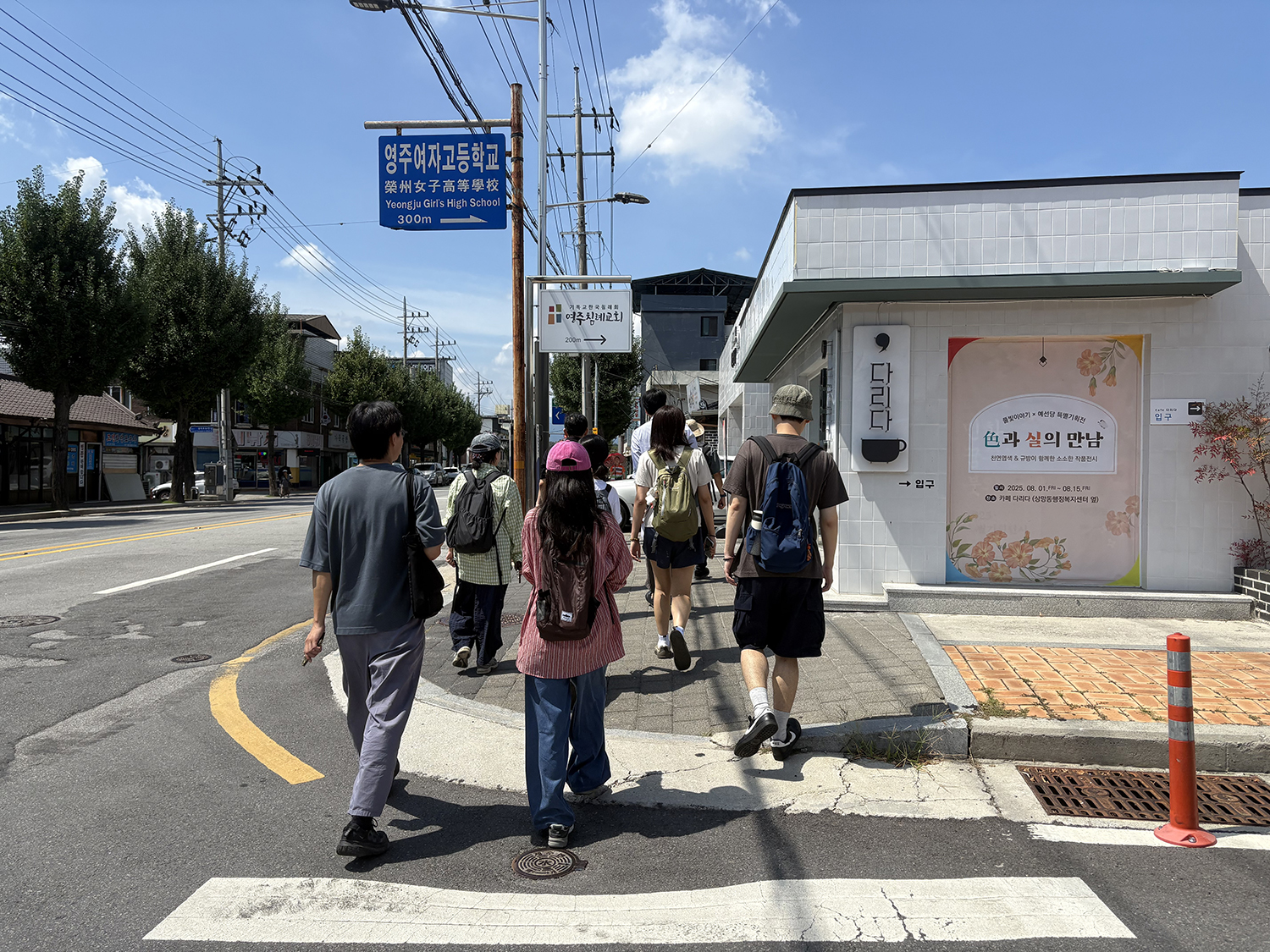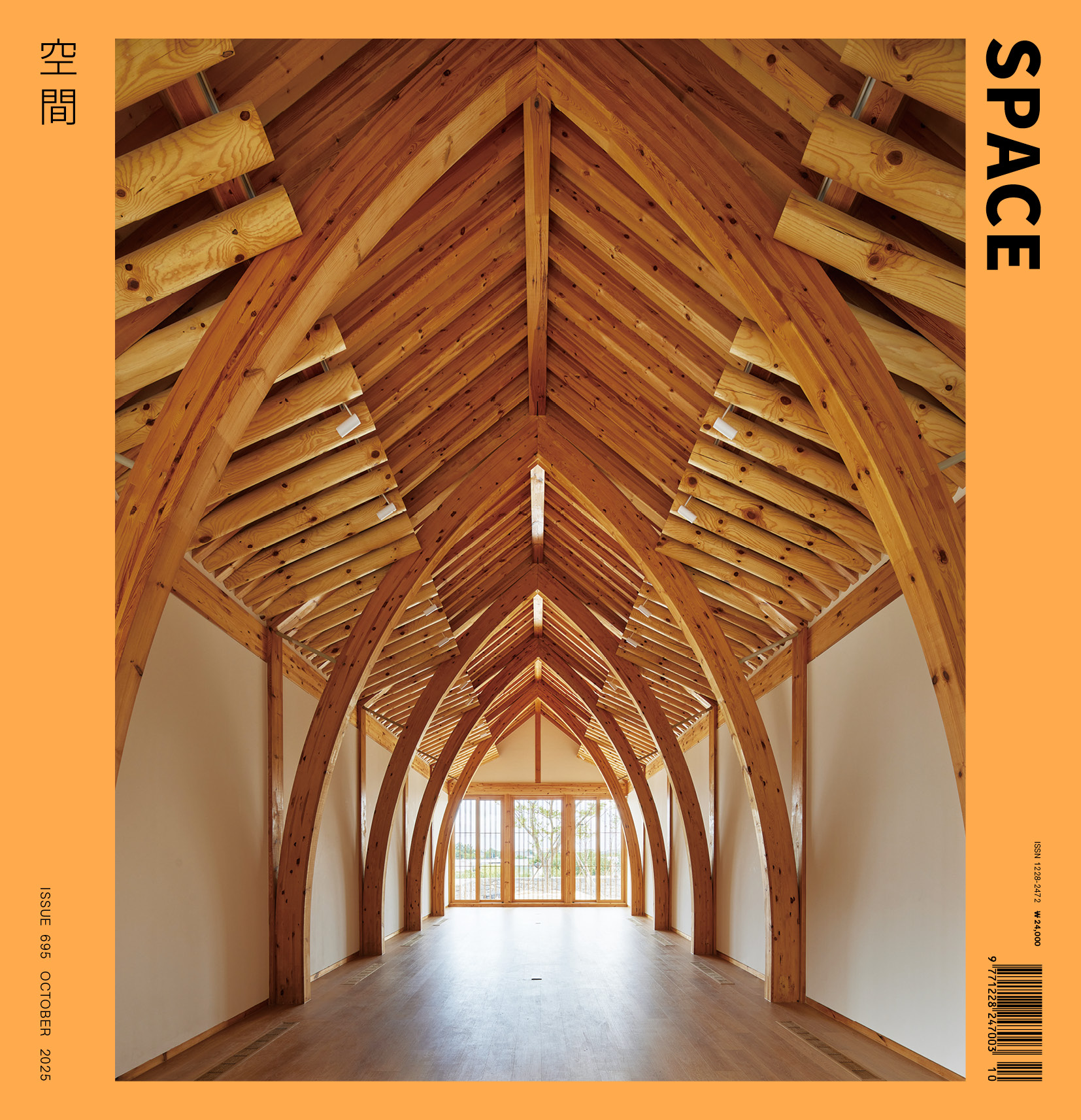SPACE October 2025 (No. 695)

Interview with Yeongju’s city architect and public architects. ©Jang Sohee

Site visit in Yeongju’s old city centre. ©Kwon Hyejoo
On Aug. 27, the Mid-Size City Forum (co-principals, Lee Janghwan, Lee Sanghyun), the city architect and public architects of Yeongju, and SPACE convened in Yeongju, Gyeongsangbuk-do. The Mid-Size City Forum, a research group that observes and studies changes and new possibilities outside major metropolitan areas, investigates demographic decline in small and medium sized (hereinafter mid-size) cities nationwide, observes shifts at the block scale, and records emerging architectural patterns. Co-hosted by the Mid-Size City Forum and Yeongju City, the programme was organised to provide firsthand encounters with these issues. It featured interviews with Cho Junbae (director, Yeongju City Urban Architecture Management Department), Kang Seunghyun (principal, Studio in Loco), Seok Jiun (principal, Monolith Architects), and Yang Keunbo (principal, Urban Architecture SU:M Architects), followed by a site visit to the old downtown.
Yeongju City was the first municipality in Korea to adopt the Public Architect system. The Mid-Size City Forum views public architecture projects through the intertwined perspectives of municipal attitudes toward architecture and locality. The interview was conducted under the theme ‘Beyond the Forefront of Public Architecture’, addressing the realities and limits underlying Yeongju City’s pioneering public projects, questions about publicness and regional identity, and the stance needed amid the decline of provincial cities. Cho Junbae recalled his connection with Yeongju City, which dates back to a mid-size city research project conducted by the Architecture & Urban Research Institute in 2007. Speaking about the Public Architect system, he explained, ‘The initial goal of the Urban Architecture Management Department was to institutionalise and establish policies so that public architecture could make an influence in the region. In the long term, the aim was to implement a masterplan and give a sense of place to the city.’ When asked whether collaborations with architects had helped reveal a sense of locality, he responded, ‘Locality is closely tied to the capacity of institutions. Even if non-governmental experts discover the elements of locality, whether those qualities are realised depends on the ability of the institution to embrace them. Using a particular colour or material in the building does not constitute locality. Rather, locality is fully expressed when multiple experts contribute, and the process itself is applied to produce results.’ Well-executed public projects can also become opportunities for emerging architects. Seok Jiun began his first project as an architect in Yeongju City. He recounted how the project, once recognised and well used as public architecture, naturally helped his practice become widely known. Investment in public architecture thus generates a virtuous cycle, delivering quality public spaces to citizens, offering opportunities to architects, and shaping the locality of a city.
The site visits, led by Cho Junbae, included key public architecture projects such as the Yeongju Senior Center (2017), the Yeongju Rehabilitation Center for the Disabled (2017), and Huseng Market (2017). These cases reflected Yeongju City’s administrative efforts to channel public funding into transforming public architecture as spaces more accessible to citizens. A walking tour of the old downtown revealed phenomena that the Mid-Size City Forum has closely observed in midsize cities, such as the so-called ‘perforation phenomenon’ and ‘ad-hoc architecture’.▼1 In many blocks, empty plots left after demolitions of vacant houses were being converted into parking lots. A direct encounter with the population declines confronting Korea’s mid-size cities.
_
1 The Mid-Size City Forum has been publishing its ongoing series, ‘The Possibilities Inherent in Extinction, Mid-Size City Forum’ in SPACE since No. 675 (Feb. 2024), which closely examined the conditions unfolding in mid-size cities beyond the metropolitan areas. The term ‘perforation phenomenon’ describes the appearance of voids in the urban fabric, such as vacant houses within inner blocks that are demolished, leaving behind gaps that look like holes in the city. The term ‘ad-hoc architecture’ refers to a tendency to extend the life of aging buildings through successive additions rather than demolition and reconstruction. For further information, SPACE No. 680 for the perforation phenomenon and Nos. 683 and 685 for ad-hoc architecture.





